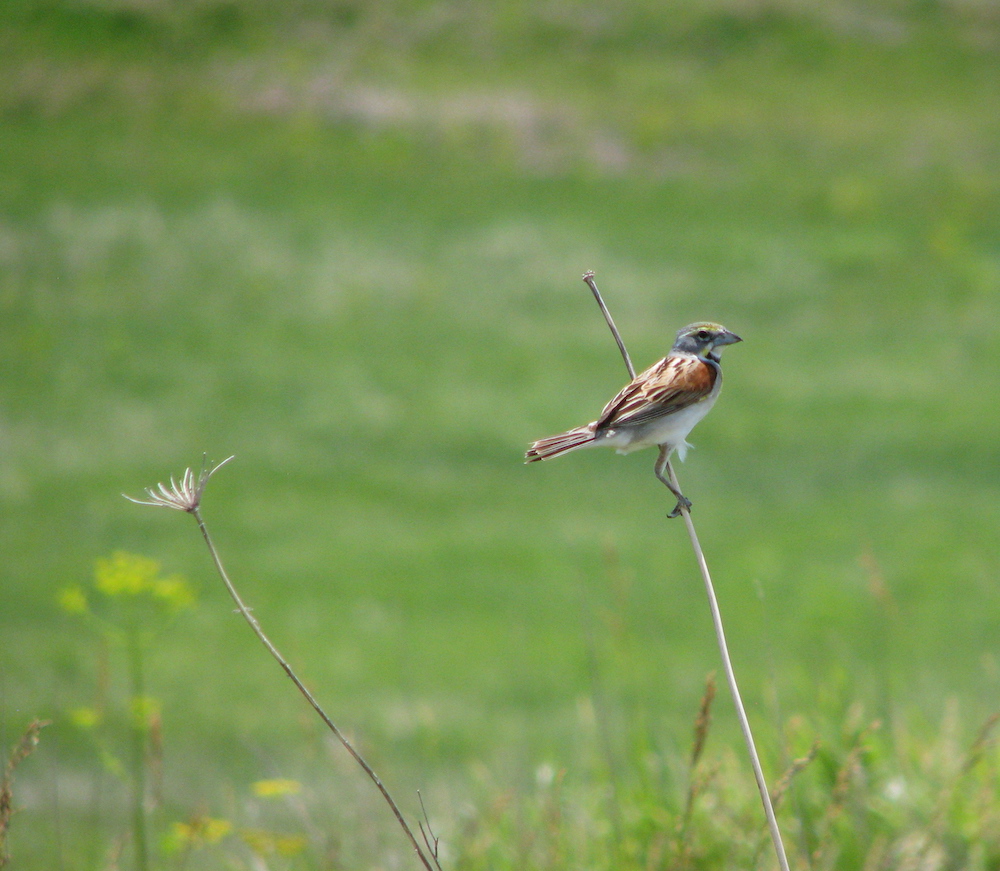
Photo by Joshua J. Cotten on Unsplash.



Photo by Joshua J. Cotten on Unsplash.

Agricultural landowners enrolled in the widely popular set-aside program, known as the Conservation Reserve Program (CRP) are required to manage their grassland conservation cover mid-way through their 10-15 year CRP contract to promote early-successional habitat for wildlife. The Natural Resources Conservation Service (NRCS) and technical partners such as National Great Rivers Research and Education Center’s Land Conservation Specialists (NGRREC-LCS) assist landowners with their CRP contracts and make recommendations to landowners regarding their mid-contract management options.
Because of the unique opportunity to conduct research directly linked to policy-based management and landowner decision making, I worked with colleagues at the Southern Illinois University Carbondale Cooperative Wildlife Research Laboratory (SIUC-CWRL) to understand how management options available to CRP landowners could influence nest survival of grassland birds—a consistently declining guild of birds in Illinois and throughout the world. The team looked at effects of light-strip disking, strip-herbicidal spraying, and a strip-spray/interseeding combination on nest survival in northwestern Illinois. Additionally, I aimed to understand how management in relation to multi-scale habitat, ranging from nest-site characteristics to landscape context, affected nest survival of: (1) red-winged blackbirds (Agelaius phoeniceus), an abundant and generalist species; (2) dickcissels (Spiza americana), a grassland specialist; (3) the ground-nesting community; and (4) the above-ground nesting community.
Finer-scale and temporal results

When looking at habitat from a landscape to a vegetation perspective (i.e. multiple habitat scales assessed), finer-scale vegetation characteristics and time of year often predicted nest survival best. Blackbird nests survived better when nests were in denser and taller vegetation and above-ground nesters, such as field sparrows (Spizella pusilla) and common yellowthroats (Geothlypis trichas), had greater nest survival in fields with higher forb diversity. Also, blackbird and dickcissel nests survived better earlier in the breeding season compared to later. This result can guide managers and policy makers to avoid conducting management that could destroy nests earlier in the breeding season, where nests have a higher chance of surviving and contribute more offspring to the overall population.
Management-focused results and explanations
Above-ground nesters, which included mostly field sparrows and common yellowthroats, responded positively to light-strip disking. Light-strip disking involved a tractor-pulled agricultural disk, removing approximately 50 percent of the residual vegetation in strips across the field. The average 3.7 percent increase in daily nest survival from disking management equated to an average 30 percent increase in probability of surviving the nesting period (PSNP) for above-ground nesters. Herbicidal spraying and spraying with interseeding treatments also generally improved nest survival of above-ground nesters compared to reference conditions.

In general, the more a field was managed across the study, and when conducted the fall before the breeding season, regardless of management type, nest survival improved for both dickcissels ( approximately 4.4 percent PSNP increase) and above-ground nesters (approximately 15.4 percent PSNP increase). Even the establishment of native warm-season grasses generally improved nest survival for blackbirds, dickcissels, and ground nesters (average 9.1 percent PSNP increase across groups) compared to fields dominated by non-native and cool-season smooth brome grass (Bromus inermis).
Policy-based management can improve nest survival of grassland birds, which is likely explained by creating vegetation structural and floristic diversity that reduces nest predator search efficiency, while also improving arthropod food resources for birds. The researchers do not recommend ignoring landscape contexts but advocate focusing management in beneficial landscapes that may also attract and retain focal species to fields that were previously unoccupied.
This article was adapted from The Applied Ecologist blog post titled “U.S. policy-based management improves grassland bird nest survival – although finer-scale habitat has superior predictive ability.”
Dr. Justin J. Shew is the Conservation Program Manager for the National Great Rivers Research and Education Center (NGRREC) of Lewis and Clark Community College (Godfrey). He is past president of the Illinois Chapter of the Wildlife Society and holds an adjunct professor and research mentor position with Webster University (St. Louis, MO). He manages the NGRREC’s Land Conservation Specialist Program and Habitat Strike Team and has the privilege of mentoring students on research projects connected to restoration and wildlife ecology. Contact Shew with any questions at jshew@lc.edu and a pre-print version of the manuscript discussed in this story can be found here.
Submit a question for the author